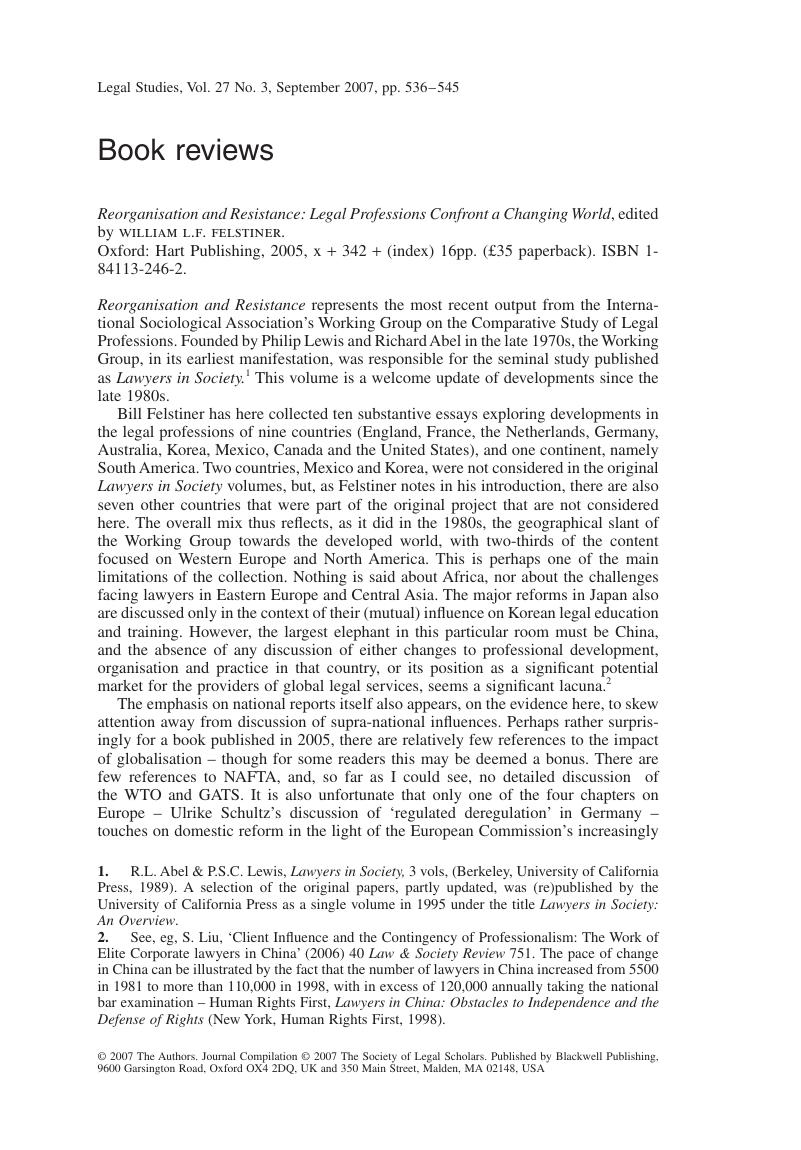No CrossRef data available.
Published online by Cambridge University Press: 02 January 2018

1. R.L. Abel & P.S.C. Lewis, Lawyers in Society, 3 vols, (Berkeley, University of California Press, 1989). A selection of the original papers, partly updated, was (re)published by the University of California Press as a single volume in 1995 under the title Lawyers in Society: An Overview.
2. See, eg, S. Liu, ‘Client Influence and the Contingency of Professionalism: The Work of Elite Corporate lawyers in China’ (2006) 40 Law & Society Review 751. The pace of change in China can be illustrated by the fact that the number of lawyers in China increased from 5500 in 1981 to more than 110,000 in 1998, with in excess of 120,000 annually taking the national bar examination – Human Rights First, Lawyers in China: Obstacles to Independence and the Defense of Rights (New York, Human Rights First, 1998).
3. English Lawyers between Market and State: The Politics of Professionalism (Oxford, Oxford University Press, 2003).
4. Obviously this could be of significance. I recently learned that the only private law school in Germany recruits selectively, unlike its public counterparts. It has rapidly achieved the best pass rate in the state examinations. While the relationship between these factors should be tested, there is at least a plausible connection.
5. Reorganisation and Resistance, p. 3.